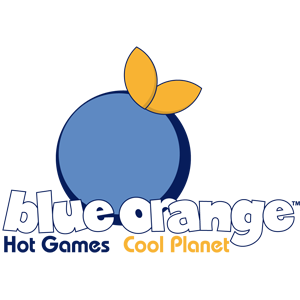RIP Twovember
It’s now December, and Twovember is now dead and gone. It kind of worked, it kind of didn’t. I want to talk about the good, the bad, and the plans for next year.
The idea behind Twovember was simple – Play a different two player game every day in November. I have a lot of games, I thought that it wouldn’t be that hard. Unfortunately, I forgot about life getting in the way, getting burnt out on games, and getting distracted by other things (Fallout 4, Assassin’s Creed: Syndicate, BGG.Con, I’m looking at all of you).
I had a lot of great plays in November, and a number of them were two player games, so let’s do a quick run through of them with first impression opinions. Some of the games weren’t exclusively for two players, but I will note which ones are and which ones aren’t.
…and then, we held hands. – 2 Player Only
A creative two player game about navigating a web of nodes where the goal is to end of the appropriate node to move to the next card. There are a number of movement restrictions, including requiring a matching card to move to the next spot and not playing too many “good” or “bad” cards. The players aren’t supposed to talk about the game at all, which made this really unique. I enjoyed it and would like to play it again.
7 Wonders: Duel – 2 Player Only
I really enjoy the original 7 Wonders and most of the expansions are welcome additions at any time, but the two player game never really worked. The two player game adds a third dummy player and it just feels forced. Duel is exactly what I wanted for the two player experience. It’s quick, strategic, but very satisfying. Honestly, if you enjoy the original, pick up Duel if you ever want to play it with only two players. It’s fantastic.
Blocky Mountains – 1 to 7 Players
A very cool manual dexterity game where the players have to set up a situation and then navigate it using rods and ropes with hooks. There are ways to increase the difficulty and extra challenging cards to keep players coming back. While I’m not terribly good at dexterity games, I really enjoyed this one. It felt like a combination of Jenga and LEGO blocks and is a game I’d love to try again.
Dr. Eureka – 2 to 4 Players
Real time marble rolling and test tube tilting combine for this game that has players trying to recreate the setup on the card in the middle of the table. It’s a frantic game, especially if players tilt their test tubes and spill their marbles everywhere, but it was a lot of fun. It’s very quick to learn and to play and could be a great game for kids and adults.
Dungeon Roll – 1 to 4 Players
Dungeon crawling with dice game was a nice balance of luck and strategy. Players roll dice to determine which kinds of adventurers are in their party and the next player rolls dice to set up the dungeon. Simple color matching works well and the push-your-luck element feels right. The only issue I had is that there is no hidden information, so points are easily counted for the last player and they don’t have to risk as much, but playing with face down treasures easily solves that.
Finca – 2 to 4 Players
Certainly not a new release, but I played this for the first time while down in Texas. I really liked the way the worker movement and resource collection worked and with the windmill tiles, fulfillment tiles, and majority tiles, every game will be different. Unfortunately, it’s long out of print so if I want to get a copy of this, I’ll have to do some searching and pay extra. Still, it may be worth it, but I want to play it again and with more players.
Gold Ahoy – 2 Player Only
A simple tile laying game that has players trying to get more paths to treasure than their opponents. As there are only 36 tiles, the game plays quickly but there’s strategy in placement. The board must end as a six-by-six tile square, limiting play options. It’s not a terribly deep game, but it’s a nice little filler that could work well with children as well.
Kitty Paw – 1 to 4 Players
I am not sure how you would play this solitaire, but it’s a frantic game of grabbing cat tiles and arranging them based on the setups on the cards. With two players, this was alright, but it was more fun with the full four players. When a player has finished their setup, they are to “shout out loud ‘Meow!’ and perform the ‘Lucky Cat’ gesture” which is putting one fist in the air. Everyone else has to then do the same and the last player to do so loses points. It’s far from a strategy game, but it was a lot of fun for a goofy, light game.
Longhorn – 2 Player Only
36 wooden cow pieces (mooples), 9 location boards, a bunch of tokens, and a ridiculously large player token that the players share put a lot of game in a pretty small box. There’s an interesting back and forth where players guide their opponent’s move. Each of the colors of cows are worth the number of that color still left on the board, so getting one of the nine is worth $800, but getting four of the nine will be worth $2000. But your opponent can also take cows, decreasing their value. Really fun and I’d love to play it more.
Nyet! – 2 to 5 Players
A fun take on the standard trick taking game. After players get their hands for the round, they decline an option on the center board, taking turns until only one option is left for each category. For example, I could mark that I don’t want red to be trump in this round. I don’t get to say that I want blue to be trump, but that I don’t want red. The other categories are starting player, number of cards discarded before play starts, which color is super-trump, and how many points each trick is worth. Tricks and bonus cards can be worth from 1 to 4 points or -2 each. This rule shift each round makes the game a little chaotic, but increases the fun.
Parfum – 2 to 4 Players
Dice rolling and resource management combine to allow players to make and sell perfumes in this game. Dice determine which scents you have to make parts of a finished perfume, and the finished product can only be sold to people who want what is contained inside. The game did not work well with two, at least in the game we played. Players are effectively doubling up on turns throughout the game and it just felt forced. I’d be willing to try again with more players.
Patchwork – 2 Player Only
This game of getting patches and making a quilt is surprisingly strategic. Players start on a turn track and the player further behind gets to take the next turn. Adding a patch to your quilt board requires time and buttons. You collect buttons when you pass certain spots on the turn track based on the number of buttons on your quilt. A player can take advantage of this and potentially take multiple turns in a row. It’s a very simple game but one we really fell for and enjoyed. If you have a crafty person in your gaming group, this is a great buy.
Potion Explosion – 2 to 4 Players
Bejeweled or Candy Crush clearly had some inspiration for the marble dropping and matching mechanic, but while it looks silly at first, there’s a really solid game in this box. Players pull a marble from a slanted board and if the marbles that meet because of the removal, the player gains those as well. A quite clever way to get the marbles combined with a number of abilities in the game when you finish a potion make this a surprisingly strategic game. I can’t wait to see the US release.
Quilt Show – 2 to 4 Players
My wife is someone who loves doing crafts and playing board games, so this game was easy to get to the table. The rules weren’t the clearest, but the gameplay is similar to Ticket to Ride. Players collect dye cards to make the squares that will make quilts at the end of the rounds. There’s a little more planning to it, as quilts can only be one pattern or one color, and players have access to four patterns of six colors during the game. I enjoyed it but would like to play it again before going and making a purchase.
RESISTOR_ – 2 Player Only
Hacking circuits is the focus in this two player game of computers dueling to prevent nuclear annihilation. There’s a lot more story than there needs to be in the game, but it’s an interesting card game where players are trying to connect their core to their opponent’s core. As the game goes, cards are removed and the decisions get harder and riskier. It’s worth a look if you enjoy two player card games that don’t take up too much space on your table.
Sushi Dice – 2 to 6 Players
We have Sushi Draft and Sushi Go, why not Sushi Dice?! In this real-time dice rolling competition, two players are trying to get their six dice to match one of the three platters in the middle of the table. However, players must pay attention both to their own dice and the dice of their opponent. If a player sees a black skull in their opponent’s results, they can say “Yuck” and their opponent has to re-roll all of their dice. It’s a fun game for two players and I would like to play it again.
TKO – 2 Player Only
One of the mini Pack O Games, this game has players boxing against each other. Players have to decide if they’re going to punch high, punch low, block high, or block low. If the punch lands, that player gets a point. If an attack is blocked, the blocker gets a point. The points go to specific tracks that start between zero and two. The first player to get one of their tracks to five points wins the round, and players play the best of three rounds. It’s light, but it does the theme justice and is fun to play.
Wakanda – 2 Player Only
Players are trying to maximize their scores while minimizing the available points of their opponents by building totems. Each piece of a totem has a symbol and players will end with three cards which will determine which symbols score. Taking sun symbols will cost the player one point each unless they take the appropriate tile. It’s an interesting little game of planning and pushing your luck.
So, that’s a little bit on each of a lot of games. The plans for next year are to do this again, but not in November and with a bit more planning. Hopefully that all works out, and if you know of any games that fit the idea of Twovember, let me know in the comments below!



